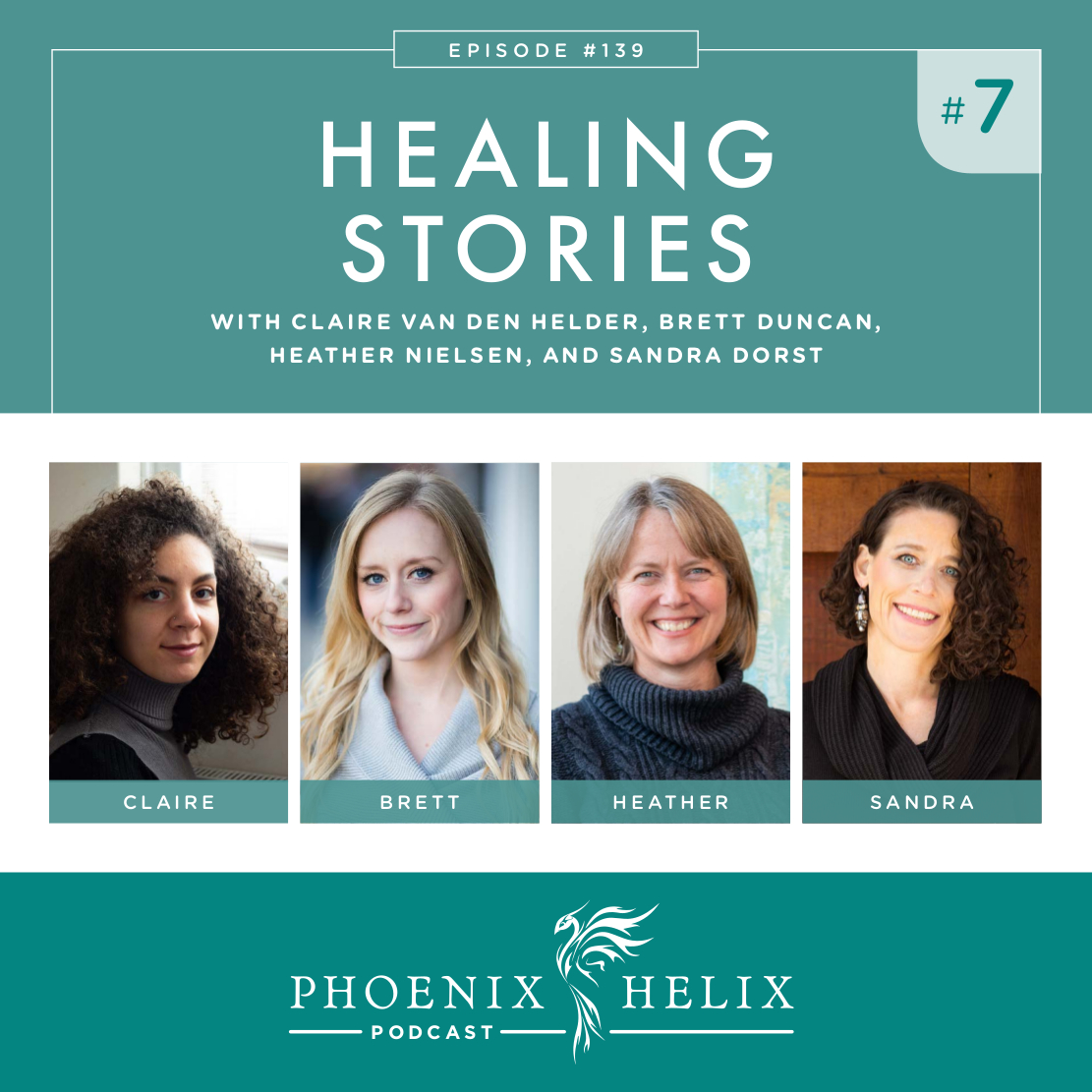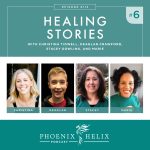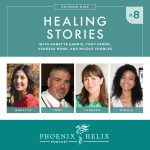
Real-Life Stories of Reclaiming Autoimmune Health
If you’re a regular listener of my podcast, you know that I start every year with a Healing Stories episode. It features back-to-back interviews with autoimmune warriors just like you! I ask them to share their journey from rock bottom to reclaiming a vital life. In this episode, we talk about Hashimoto’s thyroiditis, endometriosis, Sjogren’s syndrome, vasculitis, celiac disease, Type 1 diabetes, ankylosing spondylitis, antisynthetase syndrome, and also autoimmunity in general. Everyone’s story is unique, but we also have so much in common. Whatever your diagnosis, I hope these stories resonate and inspire.
Listen to the Show
- Subscribe to my podcast through your favorite podcast app: iTunes, Stitcher, Google, TuneIn, Spotify, Amazon, etc.
- You can also listen to the episode right here through the player below, and if you subscribe to my newsletter you’ll get notified of future episodes.
Podcast: Play in new window | Download
Show Notes
- Intro (0:00)
- Blog Updates (1:36)
- Between podcast episodes, I write articles for the blog you won’t want to miss! The latest blog post is 10 Tips for Success on the Paleo Autoimmune Protocol. Subscribe to my weekly newsletter to stay updated.
- Thank You to Our Podcast Sponsor: ShopAIP (2:45)
- I collaborated with ShopAIP to create a Phoenix Helix Bundle, which contains some of my favorite AIP pantry items. It’s a great way to sample their products!
- ShopAIP is an online store dedicated to the Paleo Autoimmune Protocol. With hundreds of items for the elimination phase of the AIP, and new products labeled by reintroduction category as well. You can find protein bars, sauces and condiments, AIP-friendly spices, cooking and baking ingredients, delicious snacks, non-toxic skincare, and more.
- If you’re a first-time customer, use the code PHOENIX for 10% off your order. Purchase here.
- Claire’s Healing Story (4:00)
- Claire van den Helder has Hashimoto’s thyroiditis and endometriosis. She was 19 years old when her symptoms began and 20 years old at diagnosis.
- When her symptoms were at their worst, she had to drop out of college. She was a student in a competitive fashion design program and couldn’t keep up with the work. In fact, her fatigue was so high she rarely left the house. Even taking a shower was exhausting and required rest afterward. She also experienced depression from the severity of her symptoms and the loss of identity, but also biologically from the low thyroid hormones. She became socially isolated, because she had to continually cancel plans with friends. At the same time, her endometriosis symptoms were excruciatingly painful during her menstrual cycle. For 3-4 days a month, the pain was sometimes so intense that she thought she would vomit. The anxiety about this monthly occurrence was overwhelming. As her period approached, her anxiety would spike.
- Now, her symptoms are significantly better and she enjoys a very active life. She’s back in college, has a part-time job, has an engaging social life, travels frequently, and has also started a blog. She did change her major from fashion design to anthropology. Fashion design is a highly stressful career, which Claire decided wasn’t good for her health. Her life is different than it was pre-diagnosis, but she loves her life now. Her endometriosis symptoms are the one area that hasn’t improved much, so on the days when she is experiencing pain, she focuses on rest and self-care.
- The interventions that led to these improvements were (1) Finding the right thyroid medication. She felt improvements within 2 weeks of switching to Tirosint. (2) Diet: She made changes in stages, first giving up gluten, dairy, and soy, and then doing the paleo autoimmune protocol for 2 months followed by reintroductions. Improvements from diet were more subtle, so it took straying off diet and feeling negative consequences to confirm how important food was in her healing. (3) Getting on a regular schedule for both sleep and meals – as a college student, she often skipped meals and when she did eat, sugar was a main component. Now, she embraces healthy foods throughout the day. (4) Prioritizing rest and self-care in balance with her activities. (5) Learning to accept life with chronic illness and realizing she could create a beautiful life, even if it was different than the one she had before. (5) Having a morning routine to help her begin her day in a relaxed state, and a bedtime routine to wind down at night. Yoga, meditation, journaling, and phone-free time are regular parts of her routines.
- Resource podcasts: Ep. 27 – Hashimoto’s Disease and Ep. 126 – Hashimoto’s AIP Medical Study.
- Claire is from the Netherlands, and her website is in Dutch. It’s called Bijzonder Auto-Immuun, and she also helps moderate the Hashimoto’s 411 group on Facebook.
- Brett’s Healing Story (24:46)
- Brett Duncan has celiac disease, Sjogren’s syndrome, and vasculitis. Although Brett began to have digestive symptoms in her teens, she wasn’t diagnosed with celiac disease until she was 30 years old. She thought it was normal to feel bloated and have frequent diarrhea, until a naturopath suggested otherwise, and celiac testing came back positive. Her other autoimmune diseases were diagnosed more quickly, shortly after their symptoms appeared. But the doctors didn’t offer any suggestions for treatment.
- When her symptoms were at their worst, she was actually traveling around the world with her husband. They had quit their jobs to spend 18 months traveling throughout Southeast Asia and Europe. It was meant to be a grand adventure (and it was), but her health plummeted at the same time. In addition to severe dry eyes and mouth, she also experienced high joint pain, debilitating fatigue, exercise intolerance, disabling vasculitis flares, unexplained welts on her skin, and digestive distress (feeling bloated after every meal).
- She decided to try the paleo autoimmune protocol while still overseas. She had already given up alcohol in 2012, because even the smallest amount would cause a vasculitis flare within 30 minutes. She went gluten-free in 2014 after her celiac diagnosis, but she hadn’t changed her diet beyond that. She went AIP in December 2018. Within 2 weeks, she lost 15 pounds of inflammation. Within 1 month, her symptoms of dry mouth and dry eyes disappeared along with her joint pain. Her skin improved as well. Mild symptoms return if she is under high stress or doesn’t get enough sleep, but nothing like before. One of her favorite results of the AIP is that she learned to listen to her body.
- Symptoms that remain: While her digestion did improve with the AIP, she’s still experiencing some symptoms along with occasional vasculitis flares. She has recently started working with a functional medicine practitioner.
- Medication decisions: Brett was never offered medication for Sjogren’s. Her doctors simply gave her the diagnosis and said there was nothing she could do, so she sought other solutions. At the time, it was unnerving but now she’s grateful. She does sometimes take steroids if needed during severe vasculitis flares.
- Resource: Ways Sjogren’s can affect the body.
- I met Brett through my Facebook page. Join us there!
- Thank You to our Podcast Sponsor: Paleo on the Go (43:55)
- A frozen meal delivery service, 100% of their menu is compliant with the elimination phase of the paleo autoimmune protocol (AIP). They have over 6o items, including entrees, side dishes, broth, AIP-friendly bacon, and desserts.
- Use the code PHOENIX for 10% off your first order.
- Heather’s Healing Story (45:42)
- Heather Nielsen has type 1 diabetes and ankylosing spondylitis (AS). She was diagnosed with diabetes at age 27 and ankylosing spondylitis at age 48.
- Diabetes onset was rapid and severe. She experienced weight loss, exhaustion, frequent illness, blurry vision, intense thirst and hunger – all of which she now knows are classic signs of diabetes. At the time, she was living a healthy lifestyle and couldn’t believe there was anything wrong with her body. Instead, she attributed all of the symptoms to stress. By the time she saw a doctor, her blood sugar tested 5 times above normal (A1C of 19.5), and she was told she was days away from a coma. They misdiagnosed her with type 2 diabetes, based on the false belief that only children get type 1 (the autoimmune form of diabetes). Thankfully, a friend’s husband was a diabetes researcher and after hearing her symptoms, knew she was misdiagnosed. He gave her a list of tests to bring to her doctor, which led to the right diagnosis and the right treatment.
- Ankylosing spondylitis developed 21 years later. Heather had a severe ankle injury that required surgery and never fully healed. Joint pain started to develop bodywide – first in the opposite knee and hip, and then in her low back, neck, and shoulders. She assumed it was a structural problem as her body compensated for the weak ankle, so she pursued chiropractic, physical therapy, acupuncture, and massage. Instead of getting better, her pain continued to worsen. Her rock bottom was a night that her teenage daughter was sick and vomiting in the bathroom. Heather couldn’t walk, so she had to crawl to the bathroom to help her daughter. That’s when she went to the doctor and received the ankylosing spondylitis diagnosis a few weeks later.
- Heather’s a big believer in the mind-body connection and has been practicing mindfulness for 17 years. However, she’s learned there is a shadow side. With both diagnoses, Heather waited until she was in a very acute state before going to the doctor. She tried to simply practice mind-over-matter. It was a deep lesson about the true spirit of the mind-body connection – that it goes both ways. It’s not about ignoring the body.
- Today, her life is much better. Her diabetes is well-managed, and her joint pain is 80% improved. She’s active, rather than disabled, and the pain that remains is limited.
- The interventions that made the biggest difference in treating AS were the paleo autoimmune protocol and biologic medication. But with both, it took two tries before she was convinced she needed them. Heather did the AIP reluctantly, fearing it was too restrictive. So when Christmas came, she skipped reintroductions and added multiple foods back into her diet all at once. Her pain and inflammation skyrocketed in response, so she want back on the AIP and this second time, went through the reintroduction process correctly. She learned that nightshades are one of her biggest flare triggers. Her medication experiments were similar. She went on Humira and experienced benefit but also side effects, so when her inflammation felt under control, she went off the medication. The symptoms resurfaced, however, so she went back on Humira long-term this time, and interestingly – she has no side effects now.
- For type 1 diabetes, a continuous glucose monitor attached to an insulin pump has been life-changing. Her blood sugar stays more balanced, with fewer highs and lows. This has improved her health overall, because with diabetes, if blood sugar plummets you need to eat sugar to get it back to a healthy level. This makes it hard to heal gut infections that thrive on sugar (such as candida or SIBO). Also, when she experiences an ankylosing spondylitis flare, steroids are often the first course of treatment, but they have a negative impact on blood sugar. This is why managing her AS symptoms is essential to managing her diabetes.
- Heather believes stress management is the missing piece of her personal health puzzle. She finds it very hard to say no and set limits for herself. However, she also knows the importance of rest, restoration, and self-care. In fact, she recommends these practices to her clients. Her goal in 2020 is to fully embody those principles herself.
- Resources: Ep. 131 – Blood Sugar and Autoimmune Disease and Ep. 48 – Medication Decisions.
- Heather and her husband have a functional medicine practice in Hood River, OR. Her husband is a physician, and Heather is a health coach. In addition to working with people 1:1, she also teaches a free 15 online mindfulness class every Monday. Connect with her through their website: Healthy Connections.
- Sandra’s Healing Story (1:09:37)
- Sandra Dorst has a rare autoimmune condition called antisynthetase syndrome. It causes a number of serious health problems, which for Sandra included interstitial lung disease, pulmonary hypertension, dermatomyositis, arthritis in multiple joints, and mechanic’s hands. It can be a life-threatening diagnosis. She was 38 years old when she was diagnosed, and her children were ages 1, 3, and 5.
- Sandra experienced severe and rapid onset which debilitated her overnight. Any physical activity, even walking across her living room, left her gasping for air. Yawning caused her chest to hurt. Joint pain was so severe it left her sobbing with pain, and she needed help with normal daily activities. She went to urgent care multiple times. Luckily, she was referred to a rheumatologist who recognized the symptoms and ordered tests that confirmed antisynthetase syndrome. Sandra was expecting a quick solution, but her doctors explained that her condition was complex and life-threatening. She was referred to Mayo Clinic for treatment from multiple specialists simultaneously.
- While medical treatment saved her life, her symptoms remained severe. Sandra didn’t want to change her diet, so she made lifestyle changes first. She found that daily exercise increased her energy and reduced her fatigue, so that was her primary self-care in the beginning. Then, she added stress management, sleep hygiene, mindfulness, and emotional work. These measures did improve her health, but daily joint pain, fatigue, and brain fog remained. 2-1/2 years after diagnosis, Sandra was ready to try the paleo autoimmune protocol. She committed 100%. She went through 2 weeks of sugar withdrawal, but after that the results were dramatic. All of her joint pain and brain fog disappeared, and she no longer needed to nap during the day. Her life now, 5 years after diagnosis, is very full. In addition to being an active mother, she also works full-time at a business she loves – something she thought she would never be able to do again.
- Sandra does have some symptoms that weren’t reversible. She experienced some permanent damage at the onset of her disease which causes some shortness of breath, muscle weakness, and reduced resilience. She has learned to adapt her life accordingly. Although her body isn’t the same as it was before developing antisynthetase syndrome, it is dramatically better than when her symptoms were at their worst.
- Medication decisions: Modern medicine saved Sandra’s life. She was put on high-dose steroids to quickly control the inflammation and immunosuppressants to prevent further damage to her body. She was also put on 24-hour supplemental oxygen which she expected to need for the rest of her life. After making lifestyle changes, she was able to stop the supplemental oxygen altogether and also wean off the steroids. She continues to take immunosuppressants as a partner in her health, but at a lower dose than she needed in the beginning.
- Sandra is the woman behind ShopAIP.
- Other Healing Stories Episodes (1:37:31)
- This is the 7th Healing Stories episode, and you can find the others here. I feature a wide variety of diagnoses, but even if your diagnosis isn’t featured, please know that these stories still apply to you. Autoimmune diseases have much in common, which is why they are treated similarly by conventional medicine, and why the paleo autoimmune protocol benefits so many.
- Many of my podcast guests I meet through social media. Be sure to follow me on Instagram and Facebook, to join the conversation.
- Outro (1:38:50)
- Eileen (your podcast host) is the author of multiple books, written to help people thrive with autoimmune disease. Learn more on the Books Page.
- If you like this podcast, follow or subscribe through your favorite podcast app. You can also subscribe to Eileen’s biweekly newsletter.
- Check out the entire archive of podcast episodes.
You May Also Be Interested In
Spreading the Word
If you like the podcast, please leave a positive review in iTunes. It would mean the world to me, and also helps others find the podcast. Here are some quick instructions using your iPhone:
- If you are already subscribed to my podcast: (1) Click the purple podcast icon. (2) At the bottom of the screen, click Library. (3) At the top of the screen, click Shows. (4) Click the Phoenix Helix podcast image. (5) Scroll down the page, and you’ll see Ratings and Reviews. Scroll down a little bit more and click on Write a Review. This will bring up the review screen. Tap 5 stars (if you love the podcast), and then click in the title box, and it will bring up the keyboard. Enter a title and short review. (6) Click Send in the upper right corner. (7) Thank you! Positive reviews give the podcast a higher search ranking in iTunes, helping people find it and letting them know it’s a quality podcast and worth their time to listen.
- If you haven’t subscribed to my podcast: (1) Click the purple podcast icon. (2) In the lower right corner, click the magnifying class. (3) Type Phoenix Helix in the search box. (4) Click the podcast cover in the Show list. (5) If you’d like to subscribe, click the + sign at the top of the screen. (6) To write a review, scroll down the page, and you’ll see Ratings and Reviews. Scroll down a little bit more and click on Write a Review. This will bring up the review screen. Tap 5 stars (if you love the podcast), and then click in the title box, and it will bring up the keyboard. Enter a title and short review. (7) Click Send in the upper right corner. (8) Thank you! Positive reviews give the podcast a higher search ranking in iTunes, helping people find it and letting them know it’s a quality podcast and worth their time to listen.








Is there any success stories with hashimotos thyroiditis, itp with cerebral venous thrombosis, apla plus, ana 2 plus ,infertility due to lupus ?
So often, people hope for a story that blends their exact set of symptoms and diagnoses. It’s not a wish that I can fulfill. But please know that every single one of these stories applies to you, regardless of diagnosis. Autoimmune diseases have more in common that not, which is why diet and lifestyle choices help so many people improve their lives. You’ll find many Hashimoto’s success stories on this website, because it’s such a common diagnosis. You’ll also find some Lupus success stories. (Just use the search box at the bottom of the page). Lastly, I did do an episode on Infertility that you might find helpful – https://www.phoenixhelix.com/2015/02/28/episode-13-autoimmunity-and-infertility/ Wishing you wellness in every way!
I am so HAPPY to hear your speakers discuss endometioris as Autoimmune as well as Autoimmune Diabetes. The Functional Medicine Physicians I follow consider both of these Autoimmune but the general public does not…yet…We really need to get the word out on this….and make this know. Eileen, thank you for everything you do for people with Autoimmune!
Thanks for writing, Donna. I totally agree. Each person who shares their story helps bridge those information gaps.